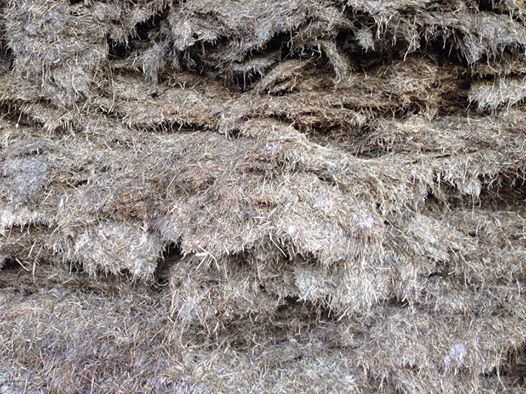Sheep Farmers Warned of Poor Silage Risking Underfed Ewes as Lambing Approaches – Concern over High Acid Load in Wet Fodder.
With pregnant ewes getting heavier as lambing dates get closer specialists from Scotland’s Rural College urge sheep farmers to check the quality of the silage they are feeding. There have been several reports of wet silages with a high Potential Acid Load (PAL), something causing sheep to eat less at an important time.
“When you are totally reliant on silage for energy supply it is very important that you monitor consumption,” says Senior Sheep specialist John Vipond of the college’s SAC Consulting arm. “If your silage analysis shows a PAL figure of over 1000 and certainly 1200 intake will be reduced, putting ewes at risk of pregnancy toxaemia. It is more likely to be a problem with wetter silage, below 20% dry matter.”
In addition to older ewes Dr Vipond is also concerned about Gimmers, lambing for the first time and possibly unused to silage. It is important to introduce them to high PAL silages gradually as a sudden intake might cause a sore stomach, making them to avoid the fodder in future.
One way to check if silage is meeting energy requirements is to have a vet blood test six ewes in each management group for betahydroxybutyrate levels, 4 weeks before lambing.
However as a rough consumption guide Dr Vipond suggests test weighing bales or a load of pit silage four to six weeks before lambing to work out what ewes are eating.
“An 80 kg ewe should eat 1.2 kg dry matter, or about 5Kg /ewe day of fresh silage with a 250g/kg dry matter content, allowing for a little wastage.” He advises re testing the silage if it is suspected the dry matter content across the pit varies.
According to John Vipond all pregnant ewes, particularly those with triplets, benefit from more trough space.
“However as sheep can neutralise high acid silage with saliva allowing the extra trough space, to a maximum of 45 cm, also encourages ewes to eat little and often, increasing their saliva production and helping them cope.”
He suggests several other ways for flock managers to avoid problems associated with a high acid load in silages.
“For acidic silages below 10.5 ME, and with high protein levels, it is prudent to supply extra energy in late pregnancy as high quality fibre sources like 0.5 kg beet pulp nuts, fed at a flat rate for the last month instead of cereals, “ he says. “Cereals produce a rapid fall in the rumen pH making it more acidic. If you must feed cereals cap the levels at 300 g/day and feed the grains whole. Low protein acidic silages can be supplemented with a 50:50 mix of low copper, wheat dark grains and beet pulp.”
From three weeks before the first lamb is due farmers can give additional daily feeds such as 100 g. soya bean meal per lamb carried to supply extra Digestible Undegradable Protein. Also available are compound feeds with 15% soya which should ideally have a high content of beet pulp nuts. Compounds rarely have high starch levels and are safe to feed with acidic silage.
In the last month of pregnancy silage with an ME over 11.0 MJ ME/kg DM can be mineralised and supplemented at least cost with protected soya (eg .Sopralin/Ultrasoy) fed at 50 g/day/lamb carried.
“This product does not react with the rumen bugs so will not make the acid load worse,” says John Vipond. “However many farmers, used to feeding concentrates, do not have enough confidence in their forage to take this step. But if you do feel you need extra energy in the last month of pregnancy feed ewes carrying two or more lambs 100g soya and 300 g beet pulp/day rather than a soya cereal mix.”





